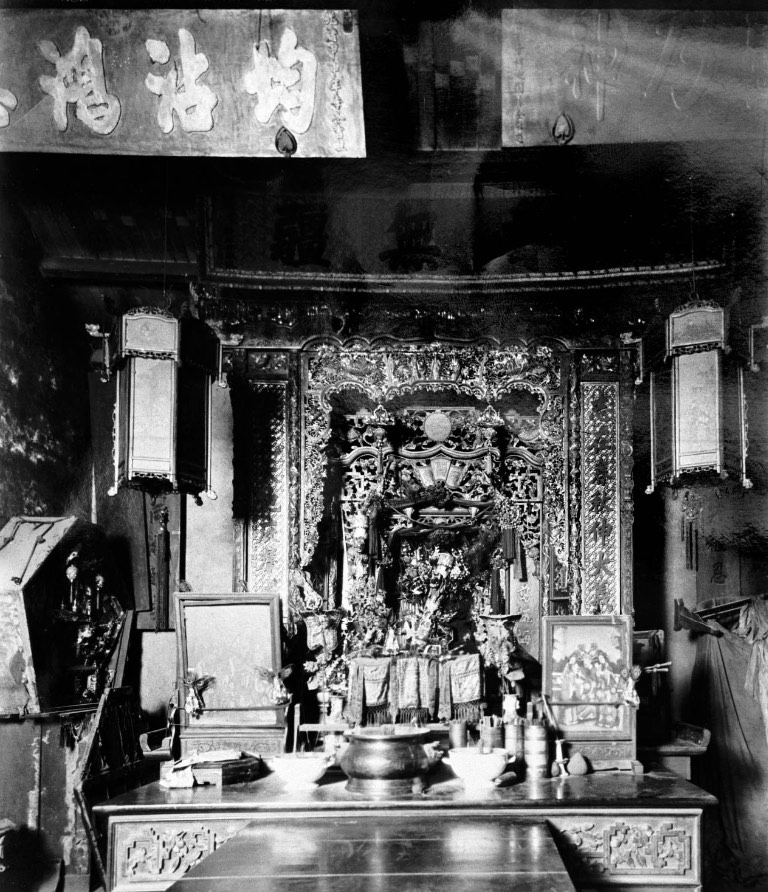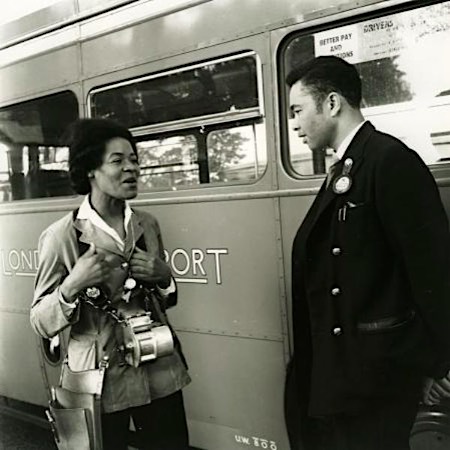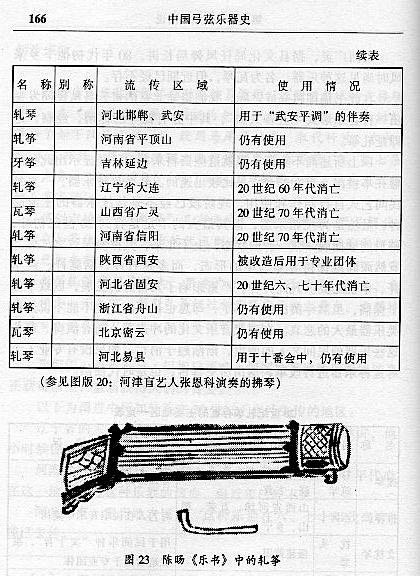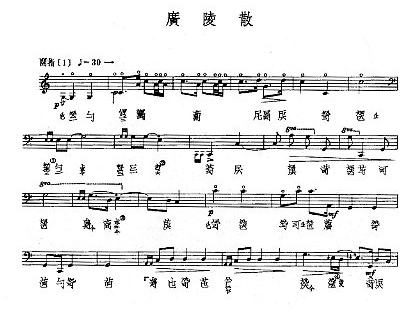*Guest post by Hannibal Taubes*
for whose remarkable website on temple murals in north China,
see my introductions here, and here.
This is also a prequel to Daoist temples in California, 1849–1920.

Funeral procession, Chico. Source.
A short research report, almost entirely built on others’ research
Recently I agreed to do some pro-bono translation work for the History Museum in Chico, a small city of about 100,000 people in the northern part of the Central Valley of California. I had time to stop by the museum in person in August 2021, while driving from Boston to San Francisco and back to pick up my stuff from storage, and was very courteously put-up and dined-out by the emeritus archaeologist in charge there, one Keith Johnson, and his family. I should note right at the start here that I know nothing about this topic, and that essentially all of the information here is shamelessly pulled either from Keith Johnson’s book Golden altars, or from the fantastic and too-little-known Chinese in Northwest America Research Committee (CINARC) website, which should be the real first stop for anyone interested in Chinese culture in 19th and early-20th century North America. Another great online introduction is this series of articles from the National Park Service, which gives a brief but lively account of Chinese settlement in 19th- and early 20th-century California, as well as its physical remains.
Some of the main Chinese temples in California discussed on the CINARC website.
Alta California acceded to the United States in 1848, in the wake of the Mexican-American War. Gold was discovered in the mountains there in the same year, prompting the first gold rush, and bringing the first Chinese immigrants (mostly from the Pearl River Delta) to the ports of California, especially San Francisco. By 1855, the Chinese community in San Francisco had Daoist temples, an opera house, two newspapers, and several civic associations. While the early communities prospered in many professions, they were shut out from various industries by discriminatory legislation and mob violence; many of the stereotypical images of “Asian” professions in frontier America (railway workers, launderers, shopkeepers) resulted from their systematic and often violent exclusion from other fields of work. Nevertheless, the Chinese immigrants successfully established businesses and Chinatowns all across the American West from the 1850s onward.
Chico
The “Palace of Serried Sages” (Liesheng gong 列聖宮) at Chico was founded in 1884 by immigrants from south China, attracted by the mining, logging, and mercantile opportunities afforded by the Central Valley and the foothills of the Sierra Nevada. Later, many found work as launderers, grocers, cooks, and domestic servants. The community was financially and commercially sophisticated—the Chico History Museum possesses a detailed 1917 account-book for what seems to be a Chinese banking and money-lending operation, recording loans, withdrawals, interest, and annuities.

Interior of the Chico temple showing altar, 1910. Source.
The photographs held in the collections of the California State University at Chico give a vivid sense of what the Chico Chinese community looked like in its heyday, as well as other similar communities in the area, especially the neighboring towns of Oroville and Marysville. We see big, cheerful-looking families, wearing a mix of Chinese- and Western-style clothes. At least one of these families from the 1950s is multiracial, a Chinese man who married an Anglo-American woman. Often the men and boys would sit for formal portraits, staring solemnly into the camera in their starchiest traditional clothes. Another striking photo captures a young girl in a gorgeously embroidered traditional dress and hat, perhaps out for some kind of holiday. Family shots of white households often show Chinese cooks or domestic servants (in the language of the day, “house-boys”), with or without named identification. By the early 20th century, class photos make it clear that ethnic Chinese children attended integrated local schools, alongside their mainly white classmates. More photos capture the scene in the multiple Chinatowns in Chico, Oroville, and Marysville—we see tumbledown launderers’ houses by the river; dense urban districts and bustling town shops; and big houses of brick and rough-hewn wood, as were common in these California frontier settlements at the time.

The altar as it stands in the Chico museum today.
Judging from the dates inscribed on the altar paraphernalia, the Chico temple seems to have been active between the 1880s and the 1910s. This tracks the history of popular Daoism in America generally. As Bennet Bronson notes, popular Daoist temples flourished in Chinese immigrant communities across North America from at least the 1850s onward, with many of the earliest surviving temples on the continent located precisely in the Central Valley region. However, the religion seems to have suffered a sudden and poorly-explained collapse in the 1920s, with many shrines closing or becoming inactive. In the case of Chico, part of the reason may have been an FBI-assisted police raid on a Chinese-run opium-distribution network in 1924 (as a result, the museum today possesses some beautiful carved and inlaid Chinese opium pipes). By the 1930s the Chico Chinatown had almost entirely vanished, and in 1939, three elderly Chinese residents gifted the surviving altar- and temple-goods to a white-American friend, from whose hands these items eventually came to the museum. The temple building was torn down in 1946.

The Bright Gate.
From the plaques and inscriptions within the temple, we get a detailed sense of the trans-Pacific and trans-Californian networks that sustained this community. Many of the temple items were manufactured in China. One such item was the massive and intricately carved Bright Gate (caimen 彩門), a gilded frieze depicting opera figures that originally hung above the temple door. According to the inscription, the Bright Gate was built on the Street of Meeting Immortals (Huixian jie 會仙街) in Guangzhou. In other cases, we have the names of the manufacturers. One of the multiple square arches that made up the altar reads:
香港 Hong Kong
城隍街 Street of the City God
百步梯 Hundred-Step Stairs
俊昌造 Made by Jun Chang
In some cases, precisely the vast distances involved in these networks appear as proof of the gods’ all-encompassing power, extending even to the shores of the New World. One set of matching couplets (duilian 對聯) around the altar reads:
帝佑宏深連華夷 神恩浩蕩流海國
The Emperor’s protection is grand and deep, linking both Chinese and Barbarian;
The god’s benevolence is vast and broad, flowing even to the nations beyond the seas.
Most of these goods were gifted to the temple by various fraternal organizations (tong/tang 堂), which could be based either in China, in San Francisco (the nearest large city and sea-port, with a large and well-established Chinese population), or elsewhere on the Western seaboard of the USA. Another inscription on the Hong-Kong produced altarpiece explains how it arrived in Chico:
沐恩余風采堂眾弟子敬 光緒十八年孟春吉旦立
A gratefully received gift of the assembled disciples of the Yee Fung Toy association,
erected on an auspicious day of the first moon of spring in the 18th year of the Guangxu reign [1892].
The majority of inscriptions in the collection are of this sort, recording the charitable or pious gifts to the temple and community, usually by major fraternal associations. While often terse, they do give a sense of how active Chinese civic organizations were in supporting the new settlement in Chico. In a few cases the objects are gifts from individuals, usually described as “disciples” (dizi 弟子) of the god. One inscription from 1908 on a pewter censor describes it as given by “the disciple Zhou Lianzi and the pious woman Yue Hao” 弟子周連子信女月好敬送, indicating that the community of believers included women wealthy and independent enough to be noted as donors.
The purpose of all these donations was to demonstrate one’s own wealth and piety, but also to adorn the communal space with beautiful objects and sophisticated calligraphy. Beyond the gorgeously carved altarpieces and Bright Gate, there are also several elegant plaques and matching couplets. In some cases the calligrapher is identified. One is a decorously anonymous Grass-hall Layman (caotang jushi 草堂居士), whom I have not been able to trace. Another couplet in a cultured hand, described as having been “repaired” (chongxiu 重修) in Guangzhou in 1891, urges lofty sentiments:
志在春秋伸大義 氣充天地庇帬生
Our intent is for the Springs and Autumns, extending great righteousness;
Its qi fills heaven and earth, and protects all living things.
董起庚薰沐敬書
Calligraphy respectfully written by Dong Qigeng, after burning incense and performing ablutions.
Dong Qigeng was a locally well-known exam-graduate, painter, and calligrapher active in 19th century Guangdong, whose works are still popular today in Chinese auction-houses. His fame had even spread abroad—his calligraphy is also found in the Chinese Consolidated Benevolent Association meeting hall (Zhonghua Huiguan 中華會館) in Victoria, British Columbia. All in all, these pieces effectively display the wealth, piety, international reach, and cultural sophistication of the Chico community.
Most of the dates given in these inscriptions are in traditional Chinese format—either an imperial regnal title (“such-and-such year of the reign of the Guangxu emperor”), or in sexagenary format according to the Heavenly Stems and Earthly Branches (tiangan dizhi 天干地支) system, or both. That is, at least as far as formal inscriptions in their temple were concerned, this community counted the years according to the accession of the Manchu emperors in far-off Beijing. One brief inscription on a pewter censor, however, gives insight into another sort of politics:
洪順堂敬送 天運六年吉日
A gift from the Hongshun Association,
on an auspicious day of the 6th year of Heavenly Motion (Tianyun).
The Hongshun Association is one name for the Heaven-and-Earth Assembly (Tiandihui 天地會), an anti-state secret society with branches in many Chinese communities, especially in San Francisco. “Heavenly Motion” is an anti-state calendrical term dating back to at least the 17th century. Its use implies that the Hongshun Association viewed the ruling Manchu imperial house and its regnal titles as illegitimate, and it was thus a statement of revolutionary intent.
When I originally saw the “6th year,” I naturally wondered what “year one” was. A note on the ever-fascinating CINARC website puts the puzzle-pieces together. Another inscription from Victoria, British Columbia, reads “Heavenly Motion 3, or the ding-wei year” 天運三丁未年. The ding-wei year corresponds to 1907. As the CINARC editors note, the famous revolutionary Sun Yat-sen gave a speech in San Francisco in 1904 endorsing the use of Heavenly Motion dates as an anti-state signifier. Thus it seems that at least one revolutionary group on the West coast of North America began to date their calendars from that year. The “6th year of Heavenly Motion” on the pewter vessel in Chico should be from 1910, only one year before China’s last imperial dynasty did in fact collapse in the face of a nationalist rebellion.
As for the rituals that took place inside the Chico temple, our only information is from old photographs and the ritual objects themselves. Like all Chinese temples anywhere in the world, the Chico temple contained incense pots, in which one could place lighted sticks of incense before bowing or “striking the head” (kowtow or ketou 磕頭) at the altar. (Hence the common term for Chinese temples in 19th- and early-20th- century English sources, “joss [incense] houses.”) The altar itself contains spirit-plaques (shenpai 神牌) dedicated to Lord Guan (Guangong 關公), Avalokiteśvara-Guanyin (觀音), the historical doctor Hua Tuo 華陀, the astrological god Great Year (Taisui 太歲), and a god of wealth called “The Astral God of Wealth and Silks” (Caibo xingjun 財帛星君). Another item is a wooden stamp with the words, “The fountainhead of wealth pours broadly in” (Caiyuan guangjin 財源廣進), presumably used for endorsing paper or cloth articles brought to the temple for luck. I haven’t come across anything recording an actual ordained Daoist priest resident in Chico, but it seems probable that one or more laymen had enough basic ritual knowledge to see to their own community’s spiritual needs.

Chico funeral procession with banners. Source.
One thing the Chico temple definitely was involved in was organising communal parades, whether for the lunar New Year, or for funerals. These parades were intended to be loud, splendid, and very public displays of the entire community’s joy or grief, and thus they were frequently objects of comment and photography by non-Chinese observers. The California State University at Chico library holds dozens of usefully-digitized photographs of these parades from the 19th century onward, in both Chico and the neighboring towns. Photos show perhaps over a hundred people marching down the main streets of town, often in sumptuous robes or ceremonial military uniforms with the character “Brave” (Yong 勇) embroidered on the front, bearing giant banners, parasols, and ceremonial weapons. Several of these wooden weapons remain among the temple-goods in the museum today. In some of the photos, the procession is led by an immense American flag, perhaps to display patriotism in their new home, or to avoid abuse by their white neighbors on these most visible of communal occasions, or both. Other photos show dragon-dances, setting off firecrackers, carrying temple palanquins with religious images, and so on.

Chico funeral procession with American flag. Source.
Related to these public funeral processions, a major concern of many Chinese communities in North America was the ritually proper burial, and reburial, of the dead. One photograph shows the Chico Chinese graveyard as it stood in the 1950s. The museum has on display two Chinese gravestones, both with elegantly simple inscriptions giving the name, place of origin, and date of death of the interred:
會邑 Hui Town (Huizhou)
古井磨耳村 Old Well Millstone Village
趙贊美墳磨 The grave of Zhao Zanmei
光緒拾六年 In the 16th year of the Guangxu reign
眾于四月卄一日 He passed away on 21st day of the first moon [June 8th, 1890].
 Another interesting object in the museum is a small red brick, with the following terse inscription:
Another interesting object in the museum is a small red brick, with the following terse inscription:
白洪[ ]井村 Bai and Hong [one character missing] Well Village
馬贊喜公墳 The grave of master Ma Zanxi
光緒三十一年四月終
Passed away in the 4th moon of the 31st year of the Guangxu reign [~ May 1905].
Such Chinese “grave-bricks” are known from across North America, as far north as Alaska. Many Chinese immigrants, concerned about dying abroad without descendants or proper burial rituals, wanted their remains to be shipped back to their native villages. An elaborate trans-Pacific network sprang up to facilitate this. These small bricks would be buried with the body, providing an accurate name and address in the event of disinterment.
The arrival of special teams from China to disinter corpses was an object of morbid interest in the American press at the time. In his capacity as a reporter in San Francisco, Mark Twain described one attempt by the California legislature to discourage Chinese immigration by banning such ritual disinterments, calling the proposed legislation “an ingenious refinement of Christian cruelty.” Another newspaper article (again, quoted on the CINARC site) describes the arrival of such a team in Chico in 1893:
The Chinese population of the town of Chico, Cal., has for the past two weeks been under a strain of excitement concerning the exhumation and removal of all the bodies buried in the Chinese cemetery of that place. This has been a gruesome spectacle. A company of native resurrectionists dug into the graves, took up the coffins, removed their contents and deliberately set to work getting rid of the more or less decomposed flesh, scraping the bones, drying them, then gathering them in bunches, carefully tied, wrapped, then labeled with the respective cognomens of the several deceased and the residence of the particular families in China … (San Francisco Call 1893-11-14, p.19)
The prurient tone of this newspaper article suggests some of the darker aspects of the Chico Chinese community’s story. For all that the Chinese community lived and prospered in Chico for over fifty years, they remained isolated amidst a society that could treat them with open and sometimes violent racism. The Chico temple was founded only two years after the passage of the Chinese Exclusion Act in 1882. The following decade saw a wave of brutal massacres, expulsions, arson attacks, and acts of mob violence against Chinese in the United States and particularly in California. By the end of the decade, many counties in the area had expelled their entire Chinese populations, often with multiple fatalities. In Chico, a fire destroyed much of the Chinatown in 1887; the firehose that might have put it out was found severed in four places. The California State University at Chico holds and has digitized the minute-book for the “Chico Anti-Chinese League,” which goes on for over a hundred pages between the years 1894 and 1896, in mercifully illegible handwriting.
Unfortunately, this story of discrimination and communal destruction is not yet over—witness the recent rise in anti-Asian hate crimes across the USA. Nor is California’s fascinating heritage of popular Daoist temples safe from harm in 2021—according to Chico archaeologist Keith Johnson, at least two historic Chinese temples in California have been destroyed by accidental fires in the last decade, and more are now in danger from the massive climate-change induced wildfires that now regularly sweep across the state, consuming towns and cities.
In early 2019, I hosted a Chinese friend in San Francisco, a Beijing-based film-maker with whom I’d worked together to document at-risk temples and historic mural sites in impoverished parts of rural Hebei province. As we walked along the waterfront in Berkeley, looking across the great blue Bay to the cloud-wrapped towers of downtown SF, winds off the Pacific were driving long trains of waves through the Golden Gate to crash on the shores of America. I told him that I was as much, and as little, a foreigner here as he. Chinese people have been in California for as long as Anglo-Americans, and Russians and Spanish and Mexicans were here before that, and before them, the Maidu, Ohlone, Miwok, Yokuts, and more peoples too many to name. When some part of this place’s history vanishes, the loss belongs to all of us.































 Another interesting object in the museum is a small red brick, with the following terse inscription:
Another interesting object in the museum is a small red brick, with the following terse inscription:














 Opening of Guangling san:
Opening of Guangling san: 










